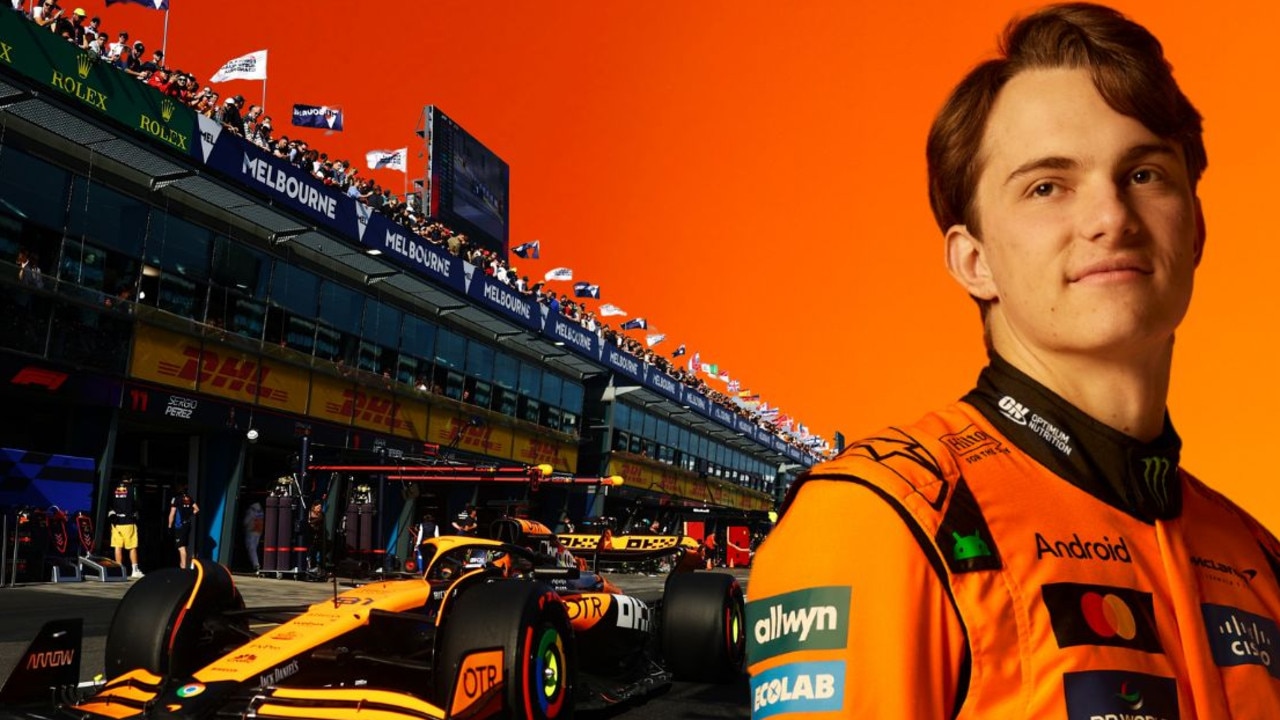More women are refusing reconstructions after mastectomy and embracing their flat chests
A growing number of breast cancer survivors are refusing reconstructive surgery after mastectomy, and embracing their scars. They’re members of “the flat pack”.
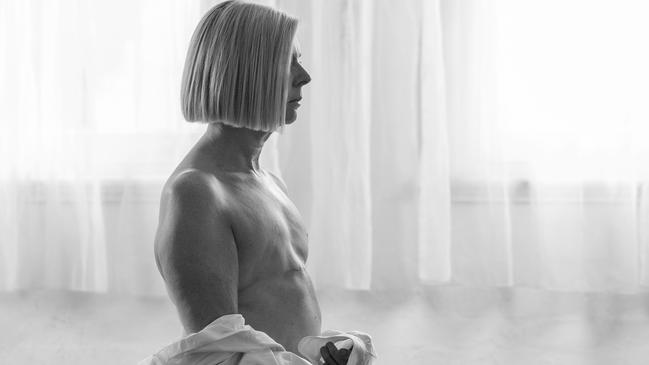
VWeekend
Don't miss out on the headlines from VWeekend. Followed categories will be added to My News.
Every morning Charlotte Tottman starts the day standing in front of the mirror, with her hands on her head, topless.
She forces herself to look directly at her chest for five seconds.
It is an exercise in dealing with gaze avoidance; a coping strategy our brains cleverly switch on, to avoid dealing with a traumatic situation.
It’s a task the clinical psychologist, who specialises in cancer-related distress, regularly prescribes to her clients.
And now, has she must force her own eyes to trace the neat scars that curve across her flat chest.
“The reason why this exercise is important is you’re challenging your avoidance, you’re confronting the reality and you’re processing what has in fact happened to you,” Dr Tottman said.
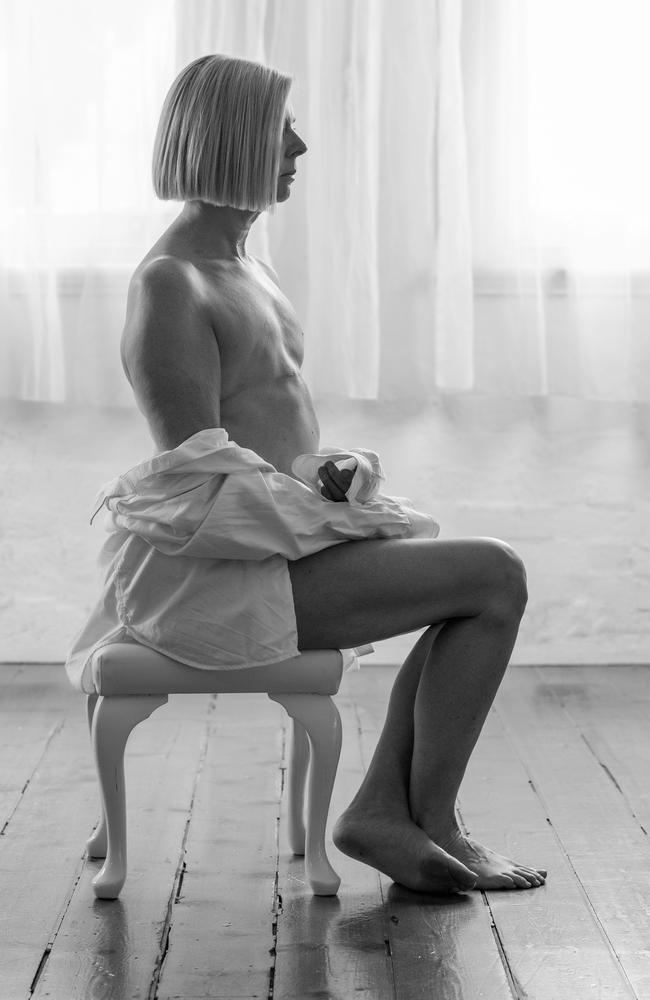
“It’s not a sure-fire fix for everything. Certainly I’m still a work in progress, but it’s helping.”
The 57-year-old is among the 40 per cent of Australian women who choose not to have breast reconstructive surgery after having their breasts removed following a cancer diagnosis.
The reasons behind the choices to join “the flat pack” are as varied as the number of ways the devious cancer cells invaded their tissue in the first place.
But patients and breast cancer support advocates say women desperately need to be better informed about all the options after mastectomy, so they can make the best choice for themselves; and not the choice society, or even plastic surgeons, deem the most appropriate.
About 40 per cent of breast cancer patients in Australia will undergo the partial or complete removal of one or both breasts, to prevent cancer from spreading.
The gold standard of treatment is for all women to be offered breast reconstruction surgery, due to the role it can play in improving body image and wellbeing for many patients.
A report commissioned by Breast Cancer Network of Australia into the experiences of women with breast reconstruction found lack of information, concerns about recovery time and cost were some of the key issues influencing decisions not to have reconstructive surgery. These reasons were even more important for women from regional and remote areas.
The recently released survey also revealed the issue of reconstruction was not raised with 10 per cent of women, while others reported that it was only through their own research they discovered that staying flat was an option.
BCNA chief Kirstin Pilatti said the report, which surveyed almost 3400 breast cancer patients from around the country, highlighted a better job had to be done to inform and support women during the stressful decision-making period.
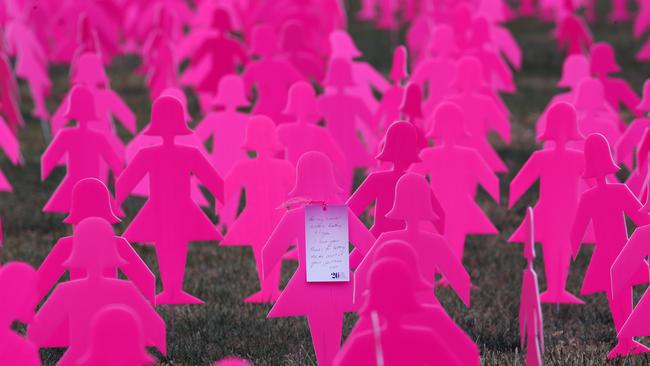
“The conversations are just assumed: that a young woman would definitely want a reconstruction. Or for older women, that their body isn’t as important to them, which may not be the case.
“Some people don’t want to wake up every morning, look in the mirror and be reminded of their breast cancer. People have different relationships with their breasts.
“By not exploring all of the options for people, and not making the right decision for them, it can have catastrophic emotional impacts on people long term. There can be emotional scars.
“That’s what came through so strongly in our report. We need to give the power back to the woman, and to do that we need to make sure she understands all of her options.”
The report makes recommendations to state and federal government about improving timely access and affordability to surgery, as well as how to improve timely and appropriate referral to specialist surgeons and decision-making tools like BCNA’s BRECONDA.
“We know that 50 per cent of people post a breast cancer diagnosis go on to have anxiety and depression. That is triggered by a whole lot of things,” she said,
“We need to make sure we rebuild women to be able to contribute back to the community, and that needs to be in a way that they want to be rebuilt – not in what our expectations of what women should be.”
Dr Tottman said her “gut reaction” after her double mastectomy almost three years ago, was that a reconstruction was not for her.
“But I needed to make sure it wasn’t an emotional decision. I needed to work through the rationale,” she said.
“I wanted to make sure I wasn’t going to regret it later. Emotion based decisions are the ones we’re most likely to regret, I say that all the time to my clients.”
One of the many late-night conversations she had during his traumatic time with husband Robin — also a clinical psychologist — was about what purpose her breasts served.
“What we came up with was sensation; they were important in an intimacy sense,” she said.
“If you have reconstructed breasts you don’t have sensation. We both felt quite clear that without the sensation there didn’t really seem to be a point in putting myself through the risks – because there are risks; the extra time off, and another year of interruptions.
“We both felt very comfortable that it wasn’t what was going to work for me.
“I’m all about authenticity and I’m not a very girly girl. I don’t wear much makeup, I hate the hairdresser. I knew that something that wasn’t real, that was a recreation, a reconstructed thing, wasn’t going to be a good fit for me.”
But that wasn’t the full stop to that decision she hoped it would be.
It was when Dr Tottman came to record her podcast Upfront About Breast Cancer – What You Don’t Know Until You Do in September, and the fourth episode where she talks about body changes following cancer treatment, it triggered a realisation that she “still has work to do”.
“It’s getting easier to say out loud; ‘I have body image issues’. I practise saying it,” she said.
“That is not a situation that would be fixed by reconstructive surgery. That is about the fact I miss my breasts. I didn’t really think I would.
“I had really small breasts. I think I thought, which was a mad thing to think, that if you’ve got really small breasts and you don’t have them anymore, then you’re not going to have much to miss.
“I have a really good scar. My surgeon did a really great job. I don’t have regrets, but I do miss my breasts and the sensation.”
‘MY SCARS SHOW MY STRENGTH AND JOURNEY’
Juliet Wilson says her heart broke like a glass hitting tiles, when she was diagnosed last New Year’s Eve with an aggressive and fast growing tumour that had spread to her lymph nodes.

“The Big C. The disease with a name I wasn’t even able to say out loud at first. The diagnosis slapped me so hard that it sucked all the oxygen from the air around me and brought me to my knees,” Ms Wilson said.
“In the days and weeks that followed, it snuck up on me when I least expected it and flooded my body with fear.
“More than a decade of chronic illness had prepared me pretty well. I knew how to find strength when I wasn’t sure I had any left. But this was a whole different situation.
“It felt on one hand like time was standing still, on the other like I was being sucked into a giant swirling vortex. For the first time I could understand why people don’t go to the doctor when they know something is wrong, but once this is real it can never be put back in the box.”
The diagnosis of triple negative breast cancer meant six months of chemotherapy, a double mastectomy, the removal of 21 lymph nodes and daily radiation therapy for five weeks.
Decision about reconstruction needed to be made early, so she started her own thorough research about her options post mastectomy.
Online social media support groups like Flat and Fabulous gave her access to stories and photos of what life as part of ‘the flat pack’ would be like.
She connected with charities like Knitted Knockers, who send women free hand-knitted breast mounds after surgery, for those wanting to add shape to their chest. She found silicon and foam inserts existed as non-surgical options for adding padding.
“There are different options for reconstruction aside from implants,” she said.
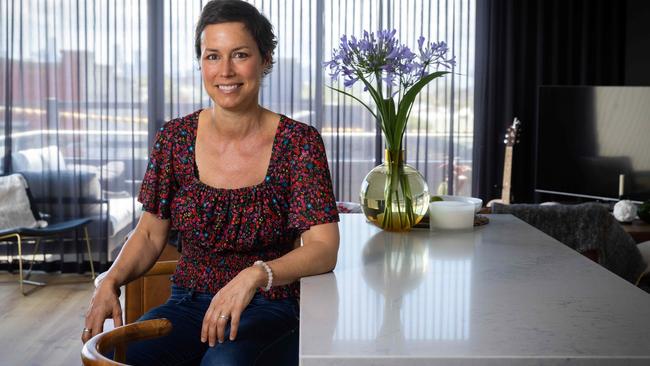
“They can take skin and tissue and fat from your stomach and thighs and create a breast mound from your own fat. You can do fat redistribution; like liposuction, taking fat from one part and injecting it into your breasts.
“The other option is they take a muscle from your back and create that breast mound from your own muscle.
“I’m naturally lean, and don’t have a lot of body fat. The plastic surgeon said I didn’t have enough fat to consider taking it from a different part of my body.
“I didn’t want to move a muscle from my back and place it on to my chest. I’m an athlete. I swim, I surf. I didn’t feel that messing with my muscles was a smart thing to do.
“I had done a lot of research and understood that those kinds of surgeries are a lot longer, the recovery time is a lot longer, and there is the potential for complications. I really wasn’t keen to explore that.
“I also wasn’t keen on implants for a variety of reasons; particularly concerns around the chronic health impacts people have with implants. You’re having to maintain a foreign object in your body. There are multiple additional surgeries you may need later.
“I started to do some research and found that going flat was a very common option for a lot of women. We’re not in the minority. The more I learned, the more I thought it was the right decision for me.”
But her decision wasn’t unanimously supported.
“I spoke about it with my breast surgeon and she was fully supportive of it. She said she was absolutely capable of removing any extra fat or tissue to make it look nice.
“I went back to the plastic surgeon for a second consultation and said; ‘Thank you, I’ve thought through the options you’ve presented, I realise I’m not a good candidate for any flap surgery. I’ve decided implants aren’t the right choice for me’.
“He said; ‘Oh. So, are you telling me – and he used this very critical voice – if you needed cataract surgery, a heart valve, or a hip replacement, then you wouldn’t do those either?’
“I was very taken aback. I said those things are functional. Breast implants are aesthetic. His response was, ‘you can’t tell me that breast implants aren’t functional when you won’t be able to wear a little top or a bathing suit again’.
“I was so horrified. I cried all the way home. I could barely see when I was driving home. “What an incredibly mean thing to say to someone coming to terms with the loss of their breasts.
“Finding the strength to deal with the physical and emotional trauma of diagnosis and treatment for breast cancer is difficult enough, without him suggesting that women who remain flat are flawed or deformed.
“What he said was completely untrue. It took me a while, and a lot of research, to find out what my options are. But many women wear little tops and bathing suits with pride, without prosthetics.
“There are also so many wonderful options for women who want to have shape; beautiful pocketed bras, lacy bralettes and bathing suits that have pockets for silicon or foam implants that allow you to wear pretty much anything you want to.
“There are some wonderful options if you decide to stay flat. You don’t have to go around feeling flawed and deformed. We should feel proud.
“Our scars are a sign of how strong we are and what we’ve been through. They’re not something that you should see as ugly.”
‘I’M MORE CONFIDENT WITH ONE BREAST’
Rosanna Principe knows to expect funny looks when she tells people her breast cancer diagnosis was the best thing that could have happened to her.
The massive shock of the arrival of an invasive ductal carcinoma two years ago, which led to a unilateral mastectomy, gave the now 53-year-old the confidence and motivation to make big changes in her life.
This new-found self belief also confirmed that a reconstruction was not for her.


“I know many people don’t think it’s a good thing, but it can really change your life for the better.
“Misfortune in your life usually occurs to point you in a different direction. There is a reason this happened to me, and it’s probably to change me into this person,” Ms Principe said.
“I’ve got more confidence now having one breast than I ever had … why would I want to put something artificial under my skin? I don’t need to have a boob to be confident, feminine and feel good.
“There were some nights where I didn’t want to look in the mirror straight away. But you’re forced to.
“Now I put my bra on and I don’t look any differently to people. I just get on with it.”
‘I DON’T THINK I LOOK BUTCHERED’
Dr Tottman still doesn’t understand why she had a burning urge to document her breasts with a photoshoot just five days after her cancer diagnosis, and in the final days she had left with them.
“I had a moment. I’d never recommended this to any clients before, and I still don’t know how it popped into my head. I thought; These breasts are going and we don’t have any photos of them,” she said.
A Google search of “boudoir photography” saw her “there in my knickers with this bloke I’d never met” in a studio in Adelaide’s CBD. At the insistence of friends, she returned post mastectomy for the final shot.
“For me, that final photo is about ‘this is how it is. It’s not all bad’. I don’t think I look butchered,” she said.
“When I show it to people, powerful is the word they use. One of my friends said to me, ‘it’s like a visual representation of everything you’ve been through. In one glimpse, it’s all there’.
“Another one said it’s grace, and it’s female form in a different, but nevertheless beautiful way.
“I think that’s quite nice because I don’t think double mastectomy is routinely thought of in that way. There can be beauty and good in what is such an awful experience.”




